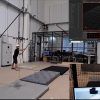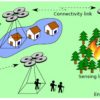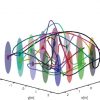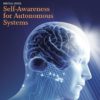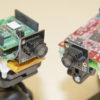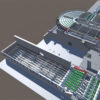Digital signal processors (DSPs) can be found in many devices such as mobile phones, PDAs and digital cameras. Their fields of application are ubiquitous ranging from control and measurement to audio and video processing.
This lecture deals with the concepts of modern digital signal processors. It covers main topics of micro processor architectures, focuses on the characteristic features of DSP and presents up-to-date processors and development methods for DSP systems. Various case studies are presented during this lecture.
The lecture is complemented by a dedicated lab course.
Outline
- Introduction to microprocessors
- Fundamentals of DSPs
- Development of DSP systems
- Examples of DSPs
- DSP programming
- DSP applications and case studies
Schedule
The course takes place in the winter term and has two teaching units per week. Please check the AAU Campus site for details on schedule and lecture rooms.
Prerequisites and Related Courses
This course is primarily indented for master students in information and communications engineering or computer science and PhD students in engineering. The course aims to cover the key technologies and methods found in modern microprocessors, with a special focus on digitial signal processors and embedded processors. Participants should have passed (bachelor) courses on computer organization/computer architecture, digitial circuits, signal processing and programming. This course is included in the catalogue “ICE: Supplements”.
Related (master) courses include sensor networks (Rinner), wireless networks (Bettstetter), pervasive computing (Rinner) and fundamentals of image processing lab.
Handouts
The course material is available via the links below. Most of the documents are passwort protected. The passwort will be provided for enrolled students at the beginning of the course.
Student Presentations
Topics and schedule will be fixed during the semester.
Exam
There is a written exam at the end of the semester. No documents are allowed.
Sample exam (PDF)
The overall grade is composed by the written exam (75%) and the student presentation (25%). The student presentation is compulsory.
Content
1. Introduction to Microprocessors
Fundamentals of Microprocessors; Performance of Microprocessors; Data path Implementation; Examples of Processors; Memory System; Cache Memory; Direct Memory Transfer
- Chapter 1.1: slides (PDF)
- Chapter 1.2: slides (PDF)
- Chapter 1: self evaluation (PDF)
- W. Wolf. A Half Million Strong at least. Computer, 2006
- Klauser. Trends in High-Performance Microprocessor Design. Telematik
- An Overview of Cache Memory (description)
- Patterson, Hennessy. Computer Organisation and Design. Morgan Kaufmann. 2013
- Wolf. High Performance Embedded Computing. Morgan Kaufmann. 2006
2. Fundamentals of Digital Signal Processors
Basics Signal Processing Systems; Features of Digital Signal Processors; DSP Implementations; Power Management
- Chapter 2: slides (PDF)
- Chapter 2: self evaluation (PDF)
- Eyre, Bier. The Evolution of DSP Processors. IEEE Signal Processing Magazine, 2000
- Bier et al. DSP Processor Fundamentals. Wiley 1996
- Berkeley Design Technology Inc. www.bdti.com
3.Development of DSP Systems
Development Process and Code Generation; Design Challenges; Data Flow Models; SW-Architecture for DSP
4.Commercial DSPs
Performance Criteria; Examples of Commercial DSPs (Texas Instruments; Other manufacturers); Alternative Platforms (FPGAs, GPUs)
5. DSP Programming
(Potential) Programming Platform DSK C6713; Some Programming Hints; Architecture; File formants
